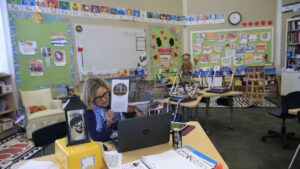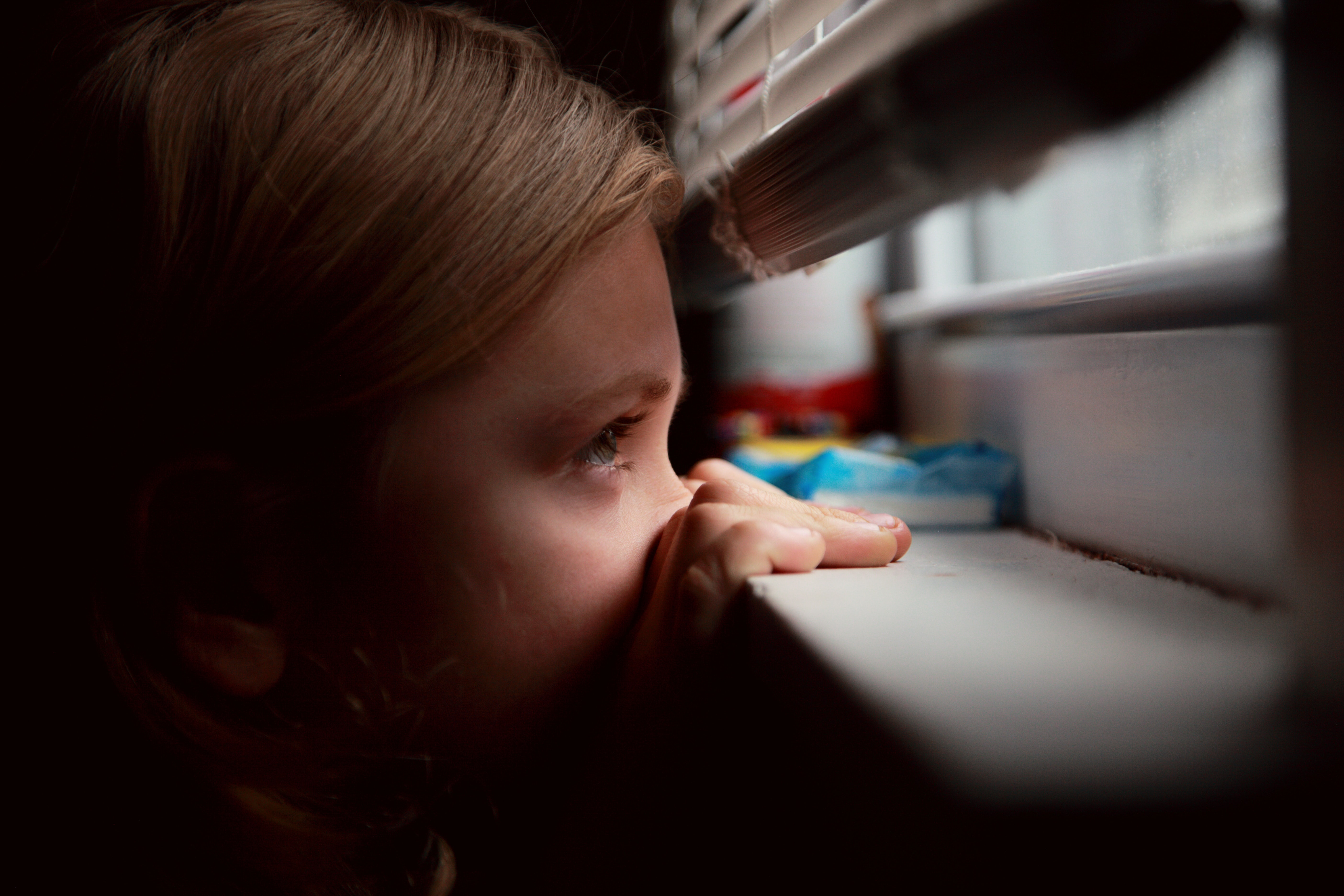
In Elementary, middle schools can open classrooms starting Jan. 19, the Gazette’s Ryan Quinn quotes a WV Department of Education spokesperson:
“We believe the inequities among students inherent to remote learning are so great that, without a health and safety justification, a move to county-wide remote learning would be a derogation of the right to a thorough and efficient education.”
“The data in both West Virginia and nationwide show that schools are safe, particular for younger learners in middle school and below.”
It’s heartening to hear WVDE, on behalf of the state superintendent and board, flex its constitutional authority taking aim at educational inequities. I trust it is prepared to do so during the upcoming legislative session. Remote learning should hardly be its primary target, however.
Educational inequities may or may not be “inherent” to remote learning, but they are indeed laid bare by it.
To be sure, remote learning under current conditions has also exacerbated inequities. That is a cause of great concern that must be urgently addressed. But the principal determinants of educational inequity affecting most West Virginia children are poverty and unfair school funding. Simply returning children to in-person learning will do little to address those endemic forces of inequity.
If remote learning is heightening these inequities, then surely we should eliminate it, right? Not if doing so risks lives or provokes greater or more harmful inequities.
Contrary to the WVDE statement, the “data” does not definitively show that “schools are safe.” On that very point, the research is still frustratingly incomplete and not yet fully reliable.
So far, COVID-related death in children, particularly younger children, is very rare. Children are also far less likely than adults to be hospitalized and are more likely to have milder symptoms or remain asymptomatic.
But children can get sick, end up in the ICU, and die from COVID. And increasingly more children are testing positive—a million more just since November. The “per capita increase from 13 in April to over 2,100 by December greatly outpaces the total population’s case rate over the same time period.”
Moreover, we do not know about the long-term health consequences of COVID in children. Researchers, for instance, have found “elevated levels of a biomarker related to blood vessel damage” from COVID, “even if the children had minimal or no symptoms.”
Still less is known about the UK-COVID variant and its effects on children.
We do know, however, that COVID-19 disproportionately afflicts Black and Hispanic children, who are more likely to experience severe COVID symptoms, including multisystem inflammatory syndrome in children (MIS-C). Should we disregard these damning inequities because students of color compose a small percentage of West Virginia’s school-age population?
And what about West Virginia’s whole population? Are schools “safe” for adults? Once again, the evidence is mixed and most often based on incomplete data.
A seismic, 40,000-person Icelandic study, which Dr. Clay Marsh has cited favorably, “found that children under 15 are about half as likely as adults to be infected with COVID-19 and, when they do catch the virus, only half as likely as adults to transmit it to others.”
This is encouraging and welcome news, albeit coming from a country that, unlike our own, “hammered Covid with science.” But this news should be tempered against the weight of other evidence. For example, a major new study from two states in this country, Michigan and Washington, accords with the Icelandic study in finding that “hybrid or fully in-person instruction are not significantly contributing to COVID spread in communities when there are low or modest pre-existing case rates in the population.”
Yet, the same study concludes, “consistent with epidemiological predictions, that in-person schooling is predicted to lead to community COVID spread when preexisting case rates in the counties in which school districts are located are high.”
As one education journalist observed: “The crucial context here is that ‘high’ COVID spread during the period of this study is very different than rates now, as the authors note. What was then considered high is now widespread.”
COVID is now widespread in West Virginia as well. And it could be worse than the state dashboard numbers suggest because we still lack a regimen of testing to capture asymptomatic cases, particularly among schoolchildren, and our contact tracing has been woefully inadequate, in part due to low participation.
Absent reliable data from testing and tracing, it will be especially difficult “to sort out where the infections are originating from” when the “community prevalence is just so high.”
None of this is to say that schools cannot be made safe. I suspect that, when this is all over, we will discover that wealthy, well-resourced schools were able to manage the risk whereas poor schools were not. But that gets us back to the square-one inequities I mentioned at the beginning.
Without addressing those first-order inequities, forcing a return to in-person schooling when it is yet unsafe might provoke second-order inequities greater than those engendered by remote learning. The plight of our teachers springs foremost to mind.
Why? Because decades of empirical research confirms that teacher quality is the most influential educational resource affecting student achievement within a school’s control.
It’s game over if we lose our quality teachers. But that is the risk of discounting their legitimate concerns over safety and teaching conditions.
A recent survey reports:
- 59% of educators do not feel secure in their school district’s health and safety precautions,
- 77% are working more today than a year ago,
- 60% enjoy their job less, and
- 27% say they are considering leaving their job, retiring early or taking a leave of absence because of the pandemic.

Long before the pandemic, states were struggling with teacher shortages and a full half of teachers surveyed had considered leaving the profession entirely. If even a fraction does so, educational inequities will abound for years to come, far outlasting the current health crisis.
Bottom line though is this: Equity is not zero-sum game. It calls for weighing and balancing to ensure that all are included and all stand to benefit, especially the neediest among us.
In the name of equity, WVDE has put its thumb on that scale in favor of in-person instruction. No doubt it has good intentions and reasons to do so—chief among them the physical, social, and emotional harms to children deprived of the protection of schooling. We should commend efforts to reduce the devastating impacts to children wrought by this pandemic (and our bungled response to it). For that reason and others, we all share the fervent desire to get kids back into the schoolhouse.
But a school is more than its house and its mission far greater than academics. By law, the core purpose of public education is to democratize schoolchildren—to develop their civic skills and dispositions, to instill in them the moral and social obligations of citizenship.
We do not model responsible citizenship by needlessly risking the lives of members of the school community or the larger community—not when promising vaccines provide hope that our suboptimal learning models will be temporary, not when there are ways to improve our instructional methods and mitigate the attendant harms in the meantime, and not when there are resources to reach our most vulnerable, neediest students, if only we could summon the political will and courage.
Nor do we model equal citizenship to our students by silencing the voices of their teachers—not when one in four teachers have preexisting conditions increasing their risk of severe COVID, not when we expect teachers to bear the burnt of all the COVID learning losses and trauma once they return, and not when we have repeatedly disrespected our teachers, most recently inciting two statewide strikes.
Rather, we can model the best of democratic citizenship for our children by taking care of each other—selflessly acting in the interests of all children, their teachers, and their communities.
Surely that is lesson worth imparting at a time when those civic dispositions and virtues are so desperately needed in the life of our state and country.
Yes, WVDE, remote learning is a derogation of the right to a thorough and efficient education. But so is in-person learning during a pandemic. In truth, we have derogated that right for decades since it was recognized as fundamental.
Of all times, it’s a cruel irony to invoke that right now, when we can realistically make the least progress towards its demands and guarantees. That is not an excuse to cast aside the right to education, even temporarily. We cannot. But we should be more careful about where we direct our right-eous indignation. By law, the Legislature and State Board bear the ultimate responsibility for providing and maintaining the fundamental right to education.
Let’s get through this pandemic together, valuing what matters most, and then pledge to commit ourselves on the other side to reconstructing “a thorough and efficient system of free schools.”
